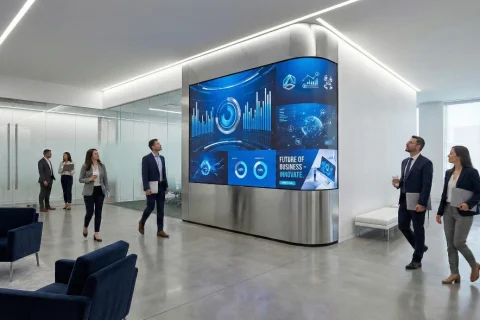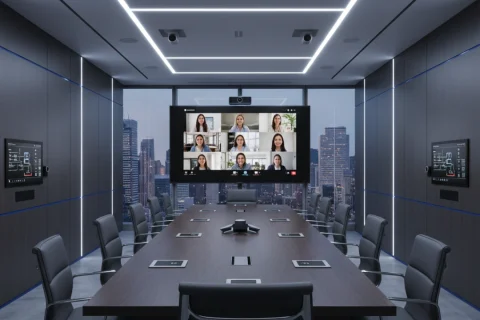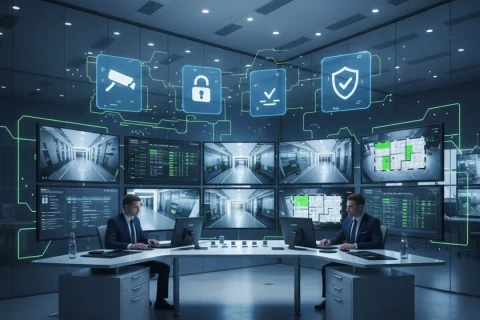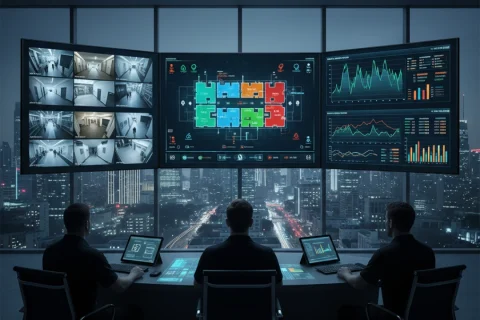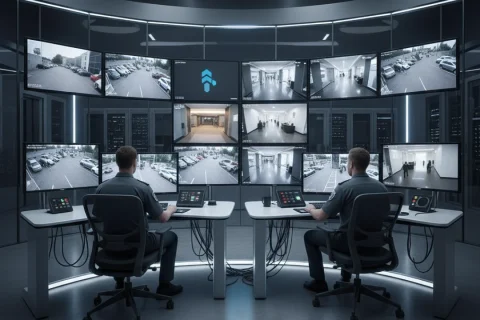Introduction: What You’ll Learn in This Blog
When it comes to ensuring safety in our homes and businesses, the integration of Extra Low Voltage (ELV) systems with security solutions is crucial. In this blog, we’ll explore what ELV and security integration is, how their integration with security systems can lead to a safer future, and the benefits this integration brings. From enhanced efficiency to emerging technologies that will shape the landscape of security, you will gain insights that can empower you to implement these systems in your environment.
Overview of ELV Systems: Extra Low Voltage systems refer to a series of electrical systems that operate at lower voltages, typically below 50V. Examples include fire alarms, CCTV, access control systems, and intercoms. Their importance in modern security settings cannot be overstated, as they serve as the backbone of any security infrastructure. By understanding ELV systems, you are better equipped to appreciate their role in creating safe environments.
Importance of Integration: ELV and security integration with security solutions is a game-changer in improving protection against threats. Throughout this blog, you will learn about the key benefits of this integration, practical implementation practices, and future trends that will influence our approach to security.
Understanding ELV Systems: Foundations of Security and Safety
Defining ELV: ELV systems are comprised of technologies that ensure safety and security. They include crucial components like fire alarms that detect smoke or fire, CCTV cameras that provide surveillance, access control systems that manage entry points, and intercoms that facilitate communication. The integration of these systems creates a comprehensive approach to security applications, effectively monitoring and managing risks.
Current Trends in ELV Technology: As technology advances, so do ELV and Security Integration. Smart systems and IoT integration are at the forefront of these advancements. For instance, intelligent fire alarms can connect to building management systems, allowing for preemptive measures in emergencies. The increasing use of artificial intelligence in CCTV systems enables smart monitoring that enhances threat detection efficiency. These trends are paramount in creating safer environments.
The Benefits of Security System Integration with ELV
Enhanced Efficiency and Management: One of the most notable the benefits of integrating ELV systems with security solutions is the enhancement of efficiency and management. Centralized management allows personnel to monitor various systems from a single interface, significantly reducing response times during emergencies. Quick access to data leads to informed decision-making, which is crucial when every second counts.
Cost-Effective Security Solutions: Beyond efficiency, the ELV and security integration proves to be economically advantageous. By utilizing shared infrastructure and centralized management systems, organizations can significantly reduce maintenance costs. Improved ROI becomes evident as overlapping functionalities lower the hurdles of operational costs, making the integrated system not just a prudent choice, but a wise one as well.
How Integration Improves Response Times and Situational Awareness
Real-Time Monitoring and Alerts: Integrated systems are significant in providing real-time feedback and alerts during emergencies. For instance, when a fire alarm is activated, integrated systems can automatically alert security personnel, lock access points, and even guide occupants to safety through alarms and intercoms. This multi-faceted response ensures that the situation is handled promptly, keeping individuals safe.
Data Analytics and Reporting: Another advantage of integration is the capacity for data analytics and reporting. Integrated systems continuously collect data, and this information can be instrumental in shaping informed decisions. By analyzing patterns and trends from security incidents, organizations can enhance their safety protocols, ensure compliance with regulations, and create a proactive approach to risk management.
Case Studies: Successful Implementation of ELV and Security Systems
Commercial Applications: Numerous businesses have experienced the benefits of ELV and security integration. For example, a large retail company integrated its CCTV, access control, and alarm systems into one cohesive infrastructure. This integration not only reduced theft incidents but also enhanced customer safety and experience, demonstrating tangible results in both security and operational efficiency.
Residential Success Stories: Homeowners are also reaping the benefits of ELV and security integration. Many families have installed smart home systems that bring together security cameras, intercoms, and alarms. For example, a homeowner reported feeling much safer after integrating their intercom with the security cameras, allowing them to easily monitor visitors while at home or away. This change has improved not only their security but also their peace of mind.
Future Innovations in ELV and Security System Integration
Emerging Technologies: The realm of ELV and security system integration is poised for innovation. Exciting technologies such as artificial intelligence and machine learning are taking center stage, paving the way for predictive analytics and automated responses to security threats. As these technologies advance, the capacity for systems to anticipate dangers will markedly improve, resulting in safer environments.
Challenges and Opportunities: Despite the benefits, organizations face challenges in the implementation of integrated systems, including compatibility issues and the need for training staff. However, these challenges present opportunities for innovation and adaptation. By investing in new technologies and training programs, organizations can harness the full potential of integrated ELV and security systems.
Conclusion: Your Role in Shaping a Safer Future
As we navigate an increasingly complex world, embracing the integration of ELV and security systems emerges as a vital step towards ensuring safety. Reflect on how you can implement these systems in your environment, whether at home or in your business. We encourage you to share your experiences or thoughts on security system integration in the comments below.
By discussing and informing others, you contribute to a community of safety-conscious individuals advocating for a brighter and safer future.
Frequently Asked Questions
What are Extra Low Voltage (ELV) systems?
ELV systems are electrical systems operating at lower voltages, typically below 50V. They include components like fire alarms, CCTV, access control systems, and intercoms, serving as essential elements for modern security infrastructure.
How does the integration of ELV and security systems enhance safety?
Integrating ELV systems with security solutions improves protection against threats by providing centralized management, real-time monitoring, and increased efficiency in responding to emergencies.
What are some current trends in ELV technology?
Current trends include the integration of smart systems and IoT, artificial intelligence in surveillance technologies, and intelligent fire alarms that enhance monitoring and preemptive emergency measures.
What benefits do integrated ELV and security systems provide?
Benefits include enhanced efficiency, cost-effective security solutions, improved response times, real-time monitoring, data analytics capabilities, and a comprehensive approach to risk management.
How do integrated systems improve response times in emergencies?
Integrated systems can automatically alert security personnel, lock access points, and guide occupants to safety during emergencies, thus ensuring quick and coordinated responses.
What role does data analytics play in integrated ELV systems?
Data analytics in integrated systems continuously collects and analyzes security incident data, allowing organizations to enhance safety protocols, ensure regulatory compliance, and adopt a proactive risk management approach.
Can you provide examples of successful ELV and security system integration?
Yes, a retail company integrated its CCTV, access control, and alarm systems to reduce theft and enhance customer safety. Homeowners have also integrated smart home systems to monitor visitors via intercoms and security cameras.
What emerging technologies are influencing ELV and security system integration?
Emerging technologies like artificial intelligence and machine learning are advancing the capacity for predictive analytics and automated responses, significantly improving security threat anticipation.
What challenges do organizations face when implementing integrated systems?
Organizations may face challenges such as compatibility issues and the need for staff training. However, these challenges can lead to innovation and adaptation if approached strategically.
How can I implement ELV and security systems in my home or business?
Start by assessing your specific security needs, researching available ELV technologies, and considering professional installation for systems that can be integrated for maximum efficiency and effectiveness.



